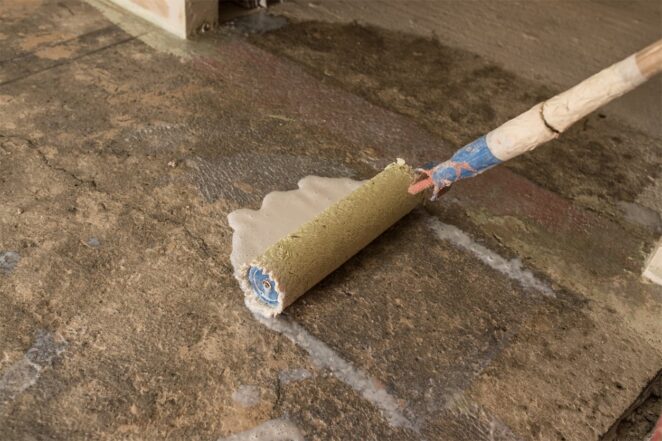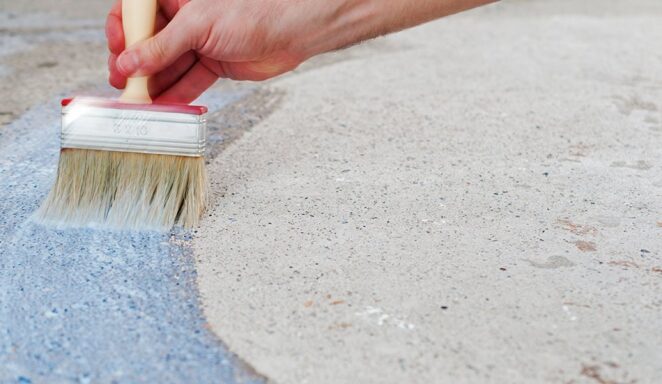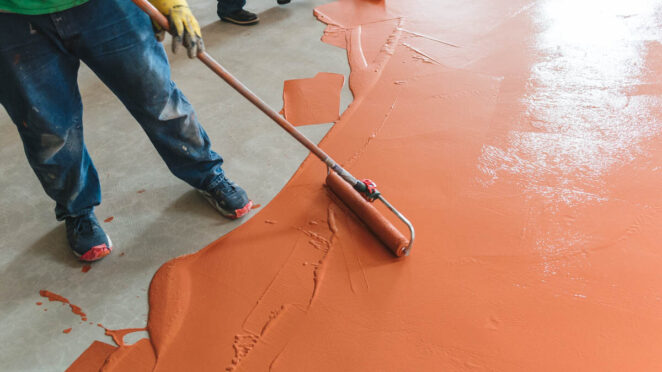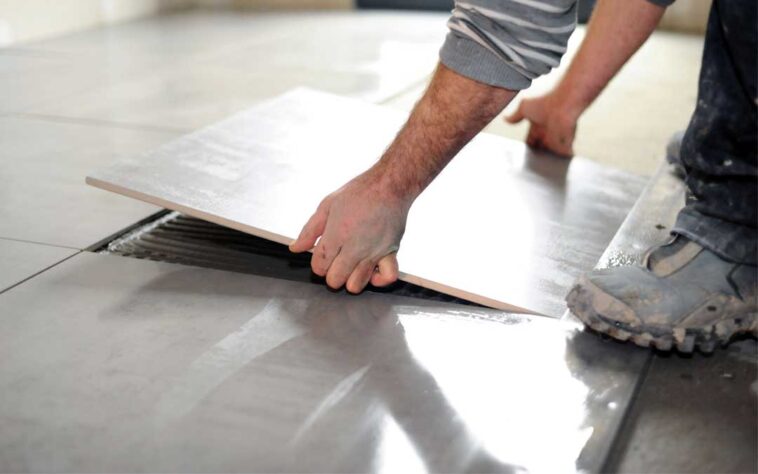If you’re looking to increase the longevity of your concrete floor, then this blog post is essential reading! With extensive research, we’ve compiled an extensive list of methods and materials to help waterproof your existing concrete floor. So don’t wait – get ready for a 2024 guide that will guarantee long-lasting results!
Benefits of Waterproofing Concrete Floors

This is an important way to protect the integrity of your floor. Applying waterproofing to your concrete floor can help reduce moisture buildup, reduce damage caused by freeze and thaw cycles, reduce cracks and spalling caused by surface erosion, and prevent the buildup of mold and mildew that can cause unpleasant odors. Check out Xypex to learn more about this type of concrete protection.
These cost-effective treatments may also impede further deterioration due to water seepage into the concrete slab, extend the life of your floors, improve lighting and energy efficiency in interior spaces, and make maintaining surfaces easier. Regular cleaning will also help maintain a lasting finish of your floors.
It is important that you choose the correct type of surface for waterproofing for your specific climate to ensure best results. For example, if you live in a humid climate with temperatures frequently reaching over 90 degrees Fahrenheit, then look for an elastomeric coating or asphalt emulsion-based products that are specifically designed for those conditions. If you live in a colder climate with temperatures below freezing more often than not, then select an acrylic-based product that has excellent weather resistance.
Steps to Prepare the Floor for Waterproofing
Before beginning the process of waterproofing your concrete floor, it is important to prepare the surface properly. Here are the steps you will need to take in order to ensure a successful waterproofing outcome:
- Clean the surface thoroughly with detergent and rinse with clear water.
- Remove any existing paint, sealer, or other coating from the concrete surface by scouring lightly and thoroughly priming with an appropriate paint stripper or etching solution per manufacturer’s instructions.
- Repair any cracks in the concrete using an appropriate patching material according to manufacturer’s recommendations.
- Fill all large pores and holes with a fine masonry grout compound designed especially for this purpose if necessary, then let it dry completely per manufacturer’s instructions before proceeding further.
- Close off any exterior sources of moisture such as water drains or sewer lines that could cause leaks around your floor by using a sealant at those areas. This can help prevent moisture from infiltrating into your concrete during heavy rains and other weather events.
- Once all these steps are complete, allow for 24 hours for a proper drying time prior to applying waterproofing chemicals onto the prepared surface of your floor area in order to ensure its effective adherence and adhesion performance characteristics when exposed to environmental conditions such as those caused by wind-driven rain and snowfall etcetera.
Types of Waterproofing Products

When it comes to waterproofing your existing concrete floor, there are several different types of products to choose from. Each has its own benefits and drawbacks, so it’s important to consider how the product will perform best in your specific setting.
One common option is sealants – products that bond with the surface and create a water-tight barrier. These waterproofing products can help protect against moisture and water infiltration; however, they may not offer additional stain or mold protection. Popular sealants for concrete floors include acrylic-based sealants, clear penetrating epoxies, silane-siloxane sealers and latex based acrylic sealers.
Another popular product for waterproofing existing concrete floors is a membrane system. This type of system consists of two parts: an adhesive applied directly to the concrete surface and an overlapping membrane material placed over top. Though this type of membrane offers superior protection against stains, moisture and mold growth compared to sealants, they may be more expensive or difficult to install correctly. Popular membranes include rubberized asphalt or bituminous adhesive systems as well as asphalt emulsion coating systems with polymer reinforcement fabrics like reinforcing fleece or geomembranes overlayed with tiles or carpeting.
It’s also possible to use specialized paint specially formulated for waterproofing existing concrete floors as well as cement-based coatings with polymer modifiers for improved adhesion and resistance against moisture penetration over time. Be sure that whatever type of product you use meets all industry standards for waterproofing applications before applying it on your existing concrete floor.
Tips for Successfully Waterproofing
This ensures that it can withstand the elements and keep its aesthetic integrity. A waterproofed floor is suitable for both indoor and outdoor applications, such as patios and decks. While waterproofing can be difficult, there are some tips you can follow to ensure the process is successful.
First, it’s important to properly prepare the surface prior to waterproofing. You will need to clean off any dirt or grime that has accumulated on the surface. This is best done with power washing or scrubbing using an appropriate cleaning solution like soap and water or a detergent-water mixture for tougher grime build-up. It’s also important to make sure that the concrete is dry prior to beginning any waterproofing process – otherwise, the material won’t stick!
Once prepped, you can apply a sealant or membrane of your choice over the entire floor area making sure it is well spread out and sealed at all edges. The type of material used in your application should depend on where your floor will be located; if outdoors UV protection may be needed whereas if indoors something moisture resistant might be better suited for the task. Always consult with a professional before making any decisions about which type of sealant or membrane would work best for your application in order to make sure you get optimal results!
Finally, once your project has been completed it’s important to maintain regularly scheduled checks (ideally every 6 months) on your waterproofed surface in order to make sure that it’s still adequately sealed and remains in good condition throughout its lifetime. If you notice small cracks appearing on the surface, these should be repaired quickly since they can lead to full-on leaks if left unchecked! Following these tips will help ensure reliable results when waterproofing existing concrete floors so that they last longer and perform better than ever before!

Conclusion
In conclusion, waterproofing your existing concrete floor is essential for protecting it against the elements, including liquid spills and other staining agents. Various products such as sealants and coatings are available to help protect your concrete floor from moisture infiltration. Furthermore, proper maintenance of the sealed concrete surface can be done with regular moisture-resistant cleaning solutions and wax treatments.




